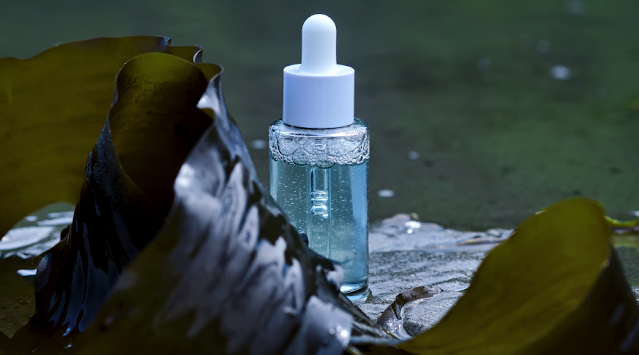
Can Lactic Acid and Niacinamide be used together?
Lactic acid and niacinamide are two popular skincare products that are highly effective against fine lines, wrinkles and dull complexion. But can they be used together? Or do you need to think a little more before using them?
Before you panic, don’t worry, by the end of today’s blog post everything will be much easier to understand, so stay tuned! And of course: if you have any questions, follow Procoal on Instagram, you’ll find me there!
What is Lactic Acid?
A less well-known and used AHA compared to glycolic acid, lactic acid is derived from sour milk and fructose. Due to its larger molecular size, it is unable to penetrate deep into the skin and cause irritation. It works on the outer surface of the skin, clearing away dead skin cells and impurities that often clog pores and make the skin congested. It also contains unique moisturizing properties, ensuring that it boosts the skin’s natural moisturizing factor. This allows the skin to protect itself from environmental influences and free radicals, such as pollution and UV rays. For more information on this clever peel, check out our dedicated blog post on lactic acid.
What is Niacinamide?
This versatile skin ingredient locks moisture into the skin’s surface, minimizing the appearance of pores while fighting dark spot issues and hyperpigmentation. It does this by keeping the skin’s lipid barrier hydrated, keeping it in its healthiest condition. An added benefit of niacinamide is that it regulates sebum production, meaning all skin types can benefit by introducing this fantastic moisturizer into your daily routine. Don’t forget to learn more about niacinamide in Beauty Insider.
Should I apply niacinamide before lactic acid or niacinamide?
It’s recommended to apply niacinamide after lactic acid. This ensures that the acid can exfoliate while the niacinamide can restore moisture to the skin barrier. This is because each ingredient has a different pH level. The higher the pH level of niacinamide, the less it is absorbed into the subepidermal layers and it works primarily on the surface. Since lactic acid has a lower pH level, i.e. it’s more acidic, it can penetrate deeper. However, it’s much gentler than its more potent relatives like glycolic and malic acids.
Different pH levels may not sound like they’re much of a hassle, but they’re often the main cause of skin irritation. The skin has a naturally acidic pH, which can become unbalanced when certain active ingredients are applied. Always make sure to leave enough time between applications so that the pH can rebalance and prepare for the application of other ingredients. The optimal time is 15 minutes or more to avoid unnecessary skin irritation.
What Not to Mix with Niacinamide?
When it comes to skincare ingredients, niacinamide is widely considered to be one of the easiest to incorporate into your routine. There are a few ingredients that work well with it, but there is one ingredient that should be avoided, vitamin C. Both ingredients are rich in antioxidants and have similar benefits for the skin, which causes them to compete with each other when applied over each other. Despite this, you can still benefit from using both ingredients, you just have to alternate the times you use them.
You can read more about what not to mix with niacinamide in our dedicated blog post.
Can I use niacinamide every day?
Yes, you can! Since almost all skin types tolerate niacinamide, you can even apply it twice a day. You’ll often find niacinamide in water-based and gel-based serums, which absorb well into the skin. It is a particularly useful ingredient to add to your routine during the winter months, as its hydrating properties draw moisture into the skin. Niacinamide combats the dryness and dehydration symptoms that occur in cold and central heating conditions.
Can I leave lactic acid on overnight?
The short answer is no. While lactic acid is one of the gentlest alpha hydroxy acids and won’t irritate the skin too much, it is best not to leave high concentrations of lactic acid on the skin overnight.
To achieve the best results and avoid adverse reactions, do not leave lactic acid-rich products on the skin for more than 10 minutes. This is the ideal amount of time to ensure that the AHA moisturizes the skin and restores its health and balance without stripping it of oils or causing irritation.
Can Niacinamide be used under the eyes? Yes you can! Recently, Niacinamide has found its way into many eye cream formulas. With a very low risk of irritation, Niacinamide can be used safely, quickly, and effectively on the under-eye area. The antioxidant properties combat dark circles while reducing the appearance of fine lines, wrinkles, and crow’s feet, which are often major concerns around the eye area. The skin around the eyes is more sensitive and is 40% thinner than the skin on the rest of the face. I would recommend that you check with your doctor or dermatologist first to check that you and your skin are happy with the formula. Is Niacinamide better in the morning or at night? The beauty of Niacinamide is that you can use it twice a day. When combined with other ingredients like lactic acid, the added moisture can balance out any slight imbalances in the skin barrier. So if you want plump, hydrated skin, reduced redness and pigmentation, and visibly smaller pores, consider using Niacinamide in your morning and nighttime skincare routine. I hope I have answered all of your questions about whether lactic acid and Niacinamide can be used together. As with all ingredients and formulas, it is best to do a 24-hour patch test before applying anything to your face to avoid skin irritation and allergic reactions. I would also recommend stopping the use of products that subsequently cause skin irritation and seeing a doctor or dermatologist.
DQH Can I use salicylic acid first and then vitamin C?
It’s easy to create a skincare routine, but knowing how to use it is another thing entirely. In most cases, if you’re not getting the desired skin results, it could be due to the layering of conflicting ingredients. So, is it possible that salicylic acid and vitamin C are such ingredients? Or are these active ingredients the duo that’s been missing from your skincare routine? If you want answers, stick around because today we are going to explain the benefits of salicylic acid and vitamin C and how they can be used in your daily life.
What are the benefits of salicylic acid for skin?
Salicylic acid is one of the most commonly used beta hydroxy acids and is favored by many people with oily, acne-prone skin. This acid is derived from willow bark, and unlike its water-soluble relatives (called alpha-hydroxy acids), salicylic acid is oil-soluble, which means it can penetrate deeper into the lower layers of the skin. Once it reaches the lower layers, it can help unclog pores of excess sebum, dirt, bacteria, debris, and impurities. This results in clearer skin tones and greater definition.
Not only does salicylic acid benefit the underlying layers, but the outer surface of the skin benefits as well. When applied to the skin, salicylic acid removes the buildup of dead skin cells. This is accomplished by breaking the bonds that hold dead cells to the surface. Over time, this can cause the complexion to look dull and prone to acne, blackheads, and other blemishes.
If you’d like to learn more about salicylic acid and how it can improve your skin, check out this dedicated blog post from a beauty insider.
What are the benefits of vitamin C for skin?
Vitamin C is considered one of the most powerful antioxidants, which means it is very effective at fighting free radicals and preventing them from causing further skin damage. Examples of free radicals include pollution, central heating, UV rays and harsh climate. They attack proteins, fats and cell membranes as soon as they come into contact with the skin, causing signs of premature aging such as fine lines and wrinkles as well as hyperpigmentation, flaky patches of skin and loss of elasticity.
Many people usually prefer to use vitamin C in their morning routine as this ingredient gives the complexion a radiant glow. You’ll also find that vitamin C can target areas of hyperpigmentation, plumping the skin and reducing the appearance of fine lines and wrinkles.
The thing about vitamin C is that there are a lot of outdated studies going back to the 1950s that describe vitamin C as an unstable skin component. Thanks to improvements in modern technology, this is no longer the case as all products now contain a stable form of vitamin C.
Visit The Beauty Insider to learn more about vitamin C. So please check out our blog post.
Can I use salicylic acid first and then vitamin C?
Yes, you absolutely can. In fact, it’s thought that using salicylic acid before using vitamin C ensures it penetrates faster and works faster.
This is an efficient way to utilize two power sources, and the reason has to do with pH. For example, the skin’s natural pH is about 4.7, making it slightly acidic. Salicylic acid and vitamin C are also both acidic, and you’ll find that vitamin C is absorbed quickly into the skin. Therefore, using salicylic acid beforehand can increase the acidity of the skin and allow vitamin C to penetrate into the skin faster.
While this is considered an effective way to combine two powerful ingredients, you need to be aware of your skin type and how it reacts to certain active ingredients. Even people with perfect, normal skin can experience skin sensitivity and irritation. Therefore, always consult a doctor or dermatologist before using any new products on your skin.
It’s also important to follow skin application rules. In this case, you need to use the product correctly to ensure you get the best results for your skin. If you’re not sure what I mean, the basic rule for skin is to start with the thinnest consistency and work your way up to the thickest consistency. This prevents a barrier from forming on the surface, preventing other active ingredients from penetrating the skin.
Can I use salicylic acid at night and vitamin C in the morning?
Yes, absolutely, this is considered the most effective way to get returns without any adverse side effects. This is because there is enough time between applications to ensure that the skin’s pH levels return to balance.
You’ll also find that Vitamin C is rich in antioxidants and is perfect for use in the morning to ensure your skin is protected and looking its healthiest. Due to the small size of salicylic acid molecules, it is an acid that is able to reach the deepest parts of the skin. While this is effective at keeping skin clear, it also increases the risk of irritation and photosensitivity. Therefore, many people prefer to use powerful BHAs in their evening routine without exposure to UV rays, pollution, or harsh weather.
Warning: If you avoid using sunscreen every day, none of these ingredients will do what your skin needs. The combination of chemical peels and powerful ingredients increases the risk of further damage to the skin’s surface. Use SPF 50 every day to keep your skin protected and your lipid barrier healthy, even on cloudy days, keeping your skin in top condition.


